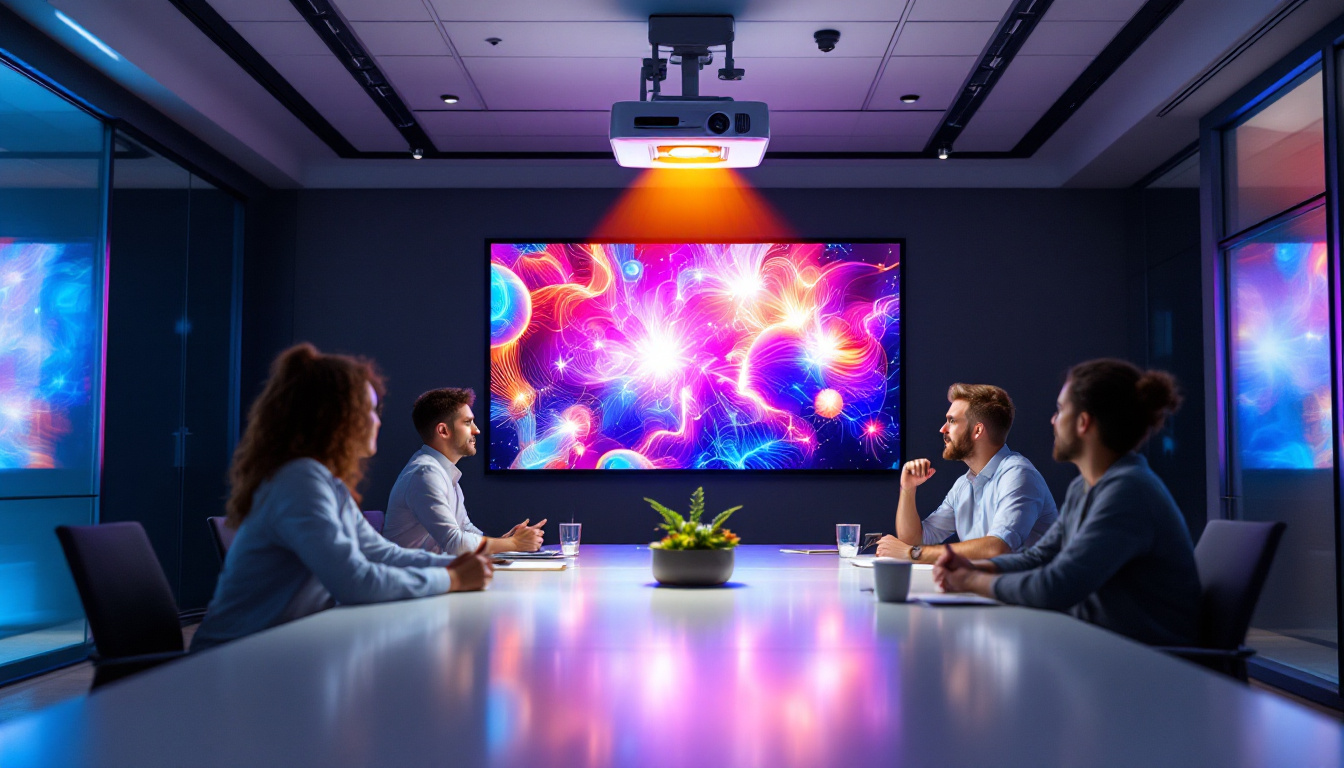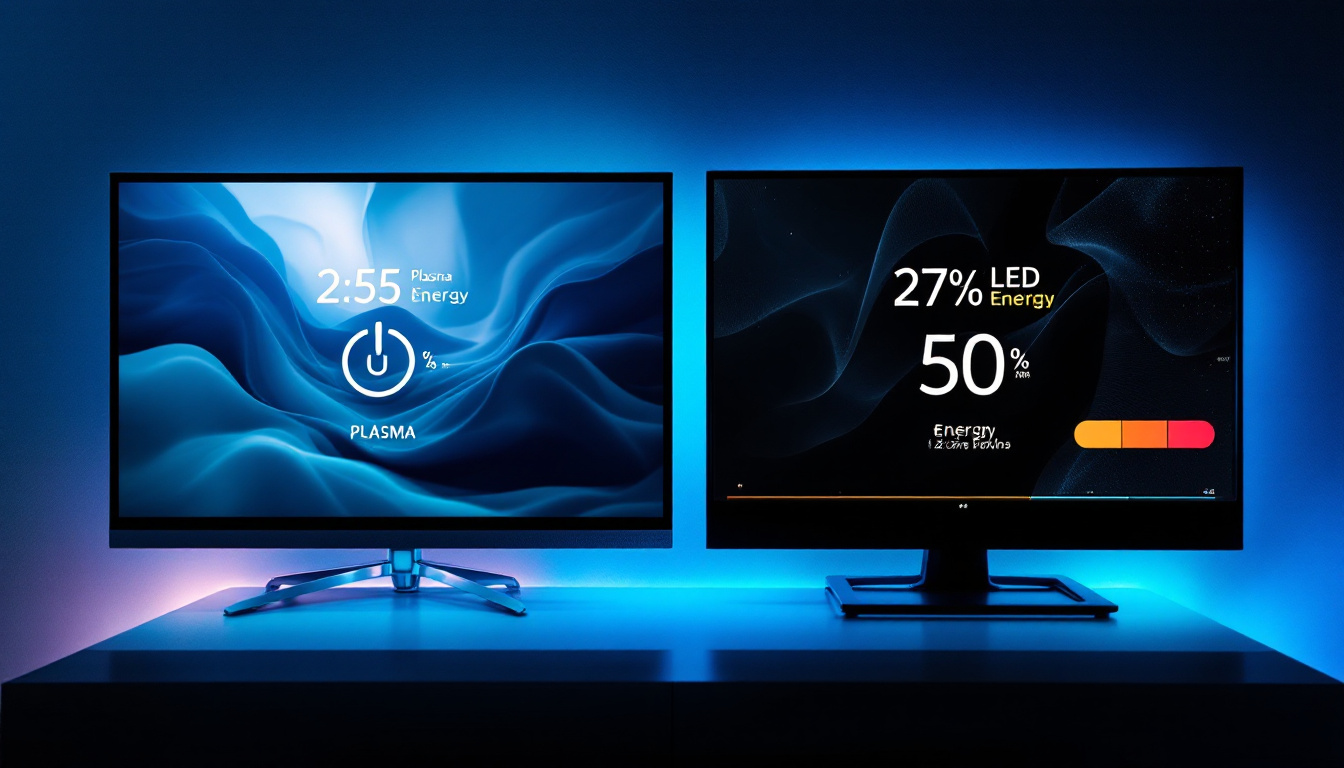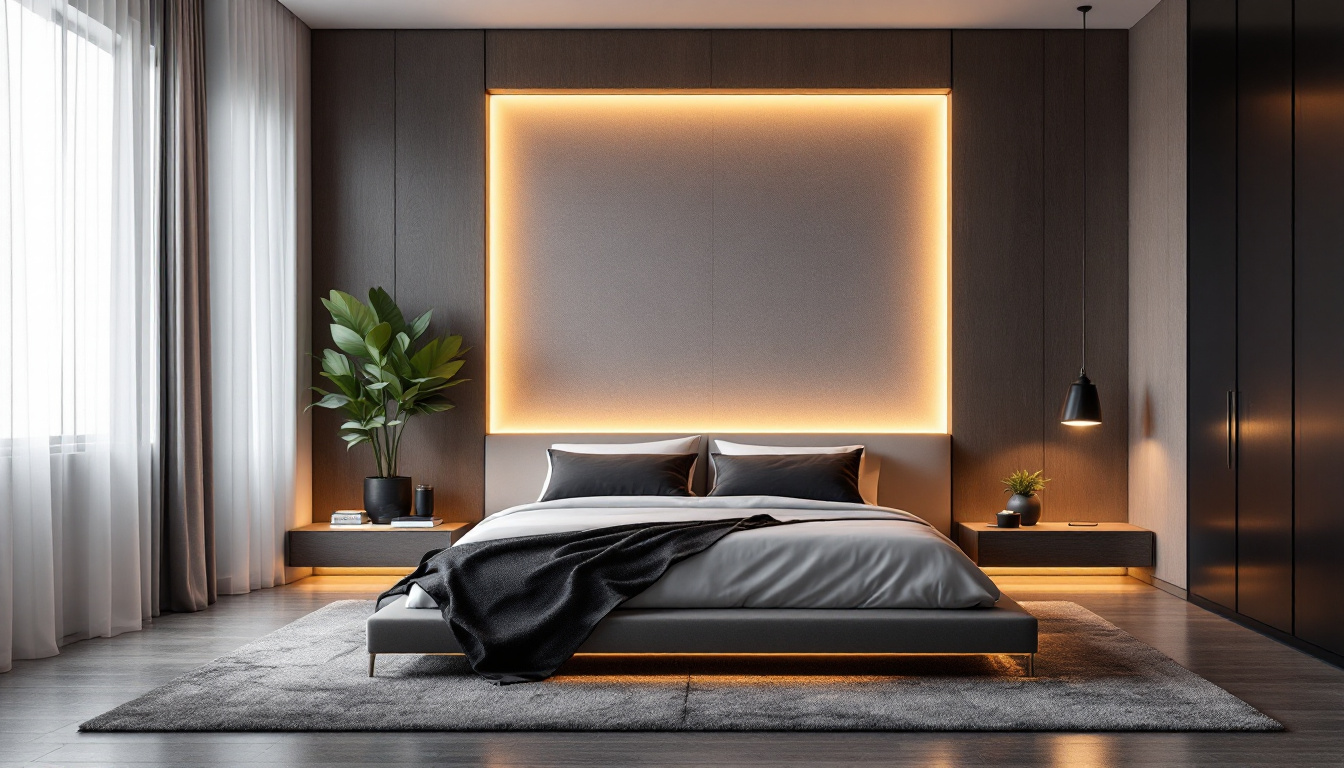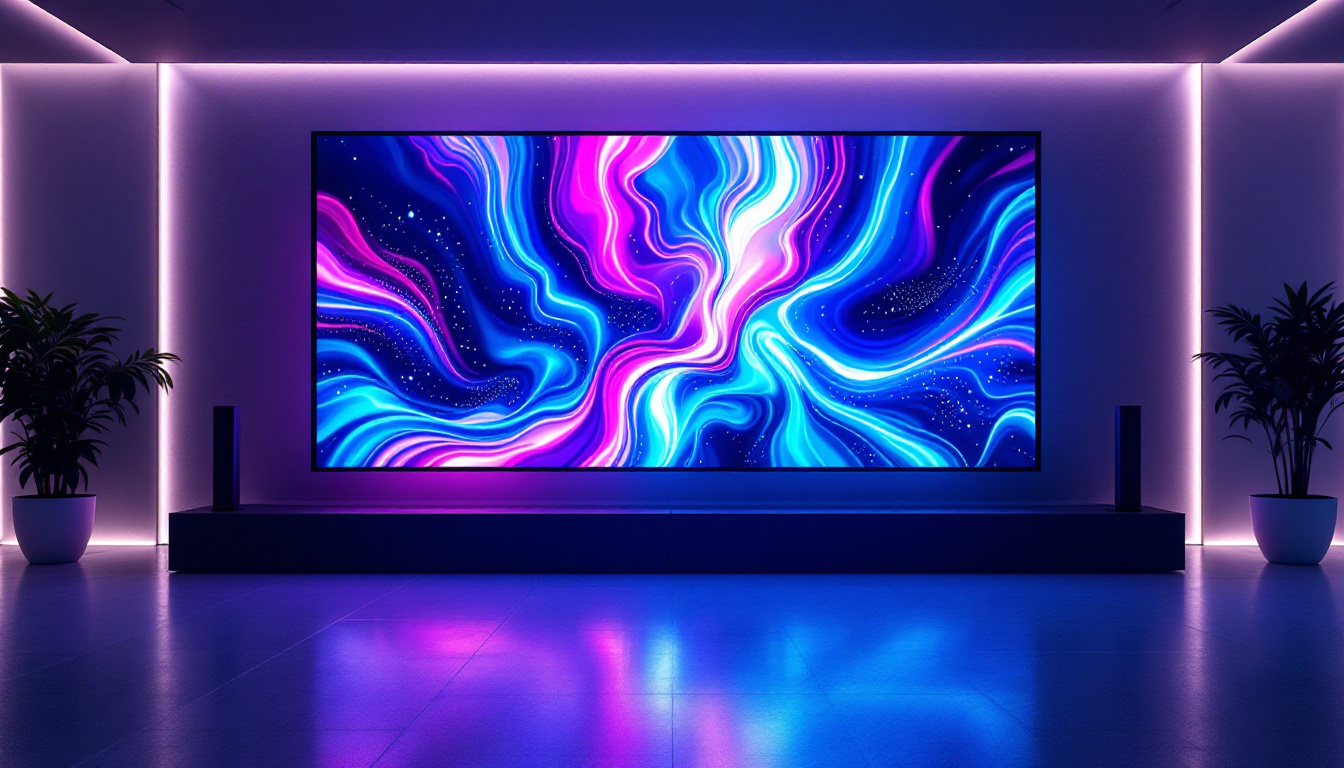In today’s fast-paced digital world, the demand for efficient and ergonomic workspace setups has never been higher. One of the most popular solutions to enhance productivity and comfort is the use of double monitor stands, especially for LED displays. This article delves into the intricacies of double monitor stands designed for LED screens, exploring their benefits, types, installation tips, and how they can transform your workspace.
Understanding Double Monitor Stands and Their Importance
Double monitor stands are mounting solutions that allow users to position two monitors side by side or stacked vertically. These stands are particularly useful for LED displays, which are known for their slim profiles, vibrant colors, and energy efficiency. By using a double monitor stand, users can maximize desk space, improve viewing angles, and reduce neck and eye strain.
According to a 2023 survey by the International Ergonomics Association, workers using dual monitor setups reported a 20% increase in productivity and a 15% reduction in musculoskeletal discomfort. This highlights the growing recognition of ergonomic tools like double monitor stands in enhancing workplace health and efficiency.
Why LED Displays Are Ideal for Dual Monitor Setups
LED (Light Emitting Diode) displays have become the standard in modern monitors due to their superior brightness, color accuracy, and energy efficiency compared to older LCD or CRT screens. Their thin and lightweight design makes them perfect candidates for mounting on adjustable stands.
Moreover, LED monitors typically generate less heat and consume less power, which is beneficial when two screens are used simultaneously. This combination of features ensures that dual LED setups remain comfortable and cost-effective over long periods of use.
Types of Double Monitor Stands for LED Displays
When selecting a double monitor stand for LED displays, it’s essential to understand the different types available. Each type offers unique advantages depending on workspace requirements, monitor size, and user preferences.
Freestanding Double Monitor Stands
Freestanding stands rest directly on the desk surface and typically feature a weighted base to support two monitors. These are easy to install and reposition, making them ideal for users who may need to move their setup frequently. Many models offer adjustable arms that allow tilting, swiveling, and height adjustments for optimal ergonomics.
For example, the Ergotron LX Dual Stacking Arm is a popular freestanding option that supports monitors up to 24 inches and offers smooth adjustability. Its compact base frees up desk space while providing sturdy support.
Clamp-Mounted Double Monitor Stands
Clamp-mounted stands attach securely to the edge of the desk, providing a stable and space-saving solution. This type is favored in professional environments where desk space is at a premium. The clamp mechanism ensures that the stand remains firmly in place, even with heavier LED monitors.
These stands often feature gas spring arms for effortless movement and positioning. The AmazonBasics Premium Dual Monitor Stand, for instance, supports monitors up to 32 inches and includes cable management systems to keep workspaces tidy.
Wall-Mounted Double Monitor Stands
For those seeking a minimalist desk setup, wall-mounted stands offer an excellent alternative. By anchoring the monitors to the wall, users can free up the entire desk surface. This setup is particularly useful in small offices or home workstations where space is limited.
Wall mounts require proper installation to ensure safety and stability, especially with larger LED displays. The VIVO Dual Monitor Wall Mount is a well-reviewed option that supports a wide range of monitor sizes and offers tilt and swivel adjustments.
Key Features to Consider When Choosing a Double Monitor Stand
Choosing the right double monitor stand involves evaluating several critical features to ensure compatibility, comfort, and durability.
Weight and Size Capacity
Each stand has a maximum weight and size capacity. LED monitors vary widely in size, from compact 21-inch models to expansive 32-inch or larger displays. It’s crucial to select a stand that can safely support the combined weight of both monitors without compromising stability.
For instance, a stand rated for 8 kg per arm will comfortably hold most mid-sized LED monitors but may struggle with ultra-wide or curved screens that tend to be heavier.
Adjustability and Ergonomics
Ergonomic adjustability is a primary reason for investing in a double monitor stand. Look for stands that offer height adjustment, tilt, swivel, and rotation capabilities. These features allow users to customize their viewing angles, reducing neck strain and improving posture.
Height adjustability is particularly important to align monitors at eye level, which is recommended by ergonomic experts to minimize fatigue during long working hours.
Cable Management
Dual monitors often come with multiple cables, including power, HDMI, DisplayPort, and USB. Effective cable management features integrated into the stand help keep cables organized and out of sight, creating a cleaner and safer workspace.
Many stands include clips or channels along the arms to route cables neatly, preventing tangling and accidental disconnections.
Build Quality and Materials
Durability is key for any monitor stand. High-quality stands are typically constructed from steel or aluminum, offering a balance between strength and weight. Cheaper plastic stands may not provide adequate support or longevity, especially with heavier LED monitors.
Investing in a well-built stand ensures stability and safety, protecting both the monitors and the user’s investment.
Installation and Setup Tips for Double Monitor Stands
Proper installation is essential to maximize the benefits of a double monitor stand. Whether freestanding, clamp-mounted, or wall-mounted, following best practices ensures safety and ergonomic efficiency.
Assess Your Workspace
Before purchasing a stand, measure your desk space and consider the placement of power outlets and peripheral devices. Ensure there is enough clearance for monitor movement and that the stand’s base or clamp can fit securely.
Follow Manufacturer Instructions
Each stand comes with specific assembly and installation guidelines. Carefully follow these instructions to avoid damage to the monitors or the stand itself. For wall mounts, use appropriate anchors and tools to secure the mount to studs or solid surfaces.
Calibrate Monitor Positioning
Once installed, adjust the monitors to eye level and at a comfortable distance, typically about an arm’s length away. Align the monitors so that the bezels are as close as possible to minimize visual disruption between screens.
Consider using software tools that help manage multi-monitor layouts to optimize workflow and reduce cursor travel time.
Benefits of Using Double Monitor Stands with LED Displays
The combination of double monitor stands and LED displays offers numerous advantages that enhance both productivity and comfort.
Enhanced Productivity
Multiple studies have shown that dual monitor setups can increase productivity by up to 30%. Having two screens allows users to multitask efficiently—one screen for reference material and the other for active work, for example. This reduces the need to switch between tabs and windows constantly.
Improved Ergonomics and Health
Adjustable double monitor stands promote better posture by allowing users to position screens at optimal heights and angles. This reduces neck, shoulder, and eye strain, which are common complaints among office workers. Over time, this ergonomic improvement can lead to fewer work-related musculoskeletal disorders.
Space Optimization
Double monitor stands help declutter workspaces by elevating monitors off the desk surface. This frees up valuable space for other essential items and creates a cleaner, more organized environment conducive to focus and creativity.
Flexibility and Customization
Many stands offer modular designs that can be adapted as needs change. Users can switch between horizontal and vertical monitor arrangements or add accessories such as USB hubs and lighting. This flexibility supports a wide range of professional and creative workflows.
Common Challenges and How to Overcome Them
While double monitor stands offer many benefits, users may encounter some challenges during setup and use.
Compatibility Issues
Not all stands fit every monitor. Differences in VESA mounting patterns, weight, and size can cause compatibility problems. To avoid this, verify the VESA mount specifications of your LED monitors and ensure the stand supports them.
Desk Stability Concerns
Heavier monitors and extended arms can sometimes cause desk wobble, especially on lightweight or poorly constructed desks. Using clamp-mounted or wall-mounted stands can mitigate this issue by anchoring the monitors more securely.
Adjusting to New Workflows
Transitioning to a dual monitor setup may require an adjustment period. Users should experiment with window arrangements and software tools to find the most efficient workflow. Investing time in this process pays off in long-term productivity gains.
Future Trends in Double Monitor Stands and LED Displays
As technology evolves, so do the designs and functionalities of double monitor stands and LED displays.
Integration with Smart Desks
Smart desks with built-in motorized height adjustment are increasingly compatible with advanced monitor stands. This integration allows seamless transitions between sitting and standing positions while maintaining optimal monitor alignment.
Increased Use of Ultra-Wide and Curved LED Monitors
Ultra-wide and curved LED monitors are gaining popularity for immersive work and gaming experiences. Future double monitor stands will likely evolve to accommodate these larger, uniquely shaped screens, offering enhanced support and adjustability.
Eco-Friendly Materials and Manufacturing
With growing environmental awareness, manufacturers are adopting sustainable materials and production methods for monitor stands. Recyclable metals and biodegradable plastics are becoming more common, aligning with corporate social responsibility goals.
Conclusion
Double monitor stands designed for LED displays are indispensable tools for modern workspaces. They offer ergonomic benefits, boost productivity, and optimize desk space, making them a smart investment for professionals, creatives, and gamers alike. By understanding the types, features, and installation best practices, users can select the ideal stand to complement their LED monitors and enhance their overall computing experience.
As technology continues to advance, double monitor stands will become even more versatile and integrated with smart office solutions, ensuring that users stay comfortable and efficient in an increasingly digital world.
Discover the Future of LED Display Technology with LumenMatrix
Ready to take your workspace to the next level with cutting-edge LED display solutions? LumenMatrix is at the forefront of LED innovation, offering a wide array of products from Indoor and Outdoor LED Wall Displays to specialized solutions like Vehicle and Sports LED Displays. Elevate your professional environment with our Custom, All-in-One, and Transparent LED Displays that promise to transform your visual communication and engagement. Check out LumenMatrix LED Display Solutions today and experience the future of digital signage in your modern workspace.































